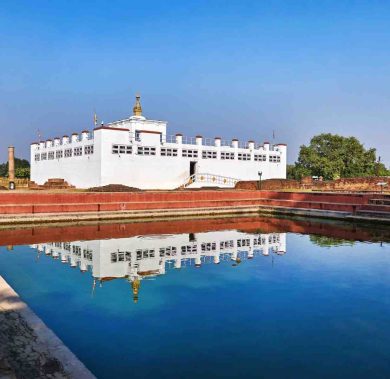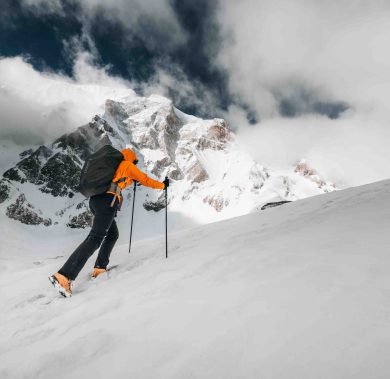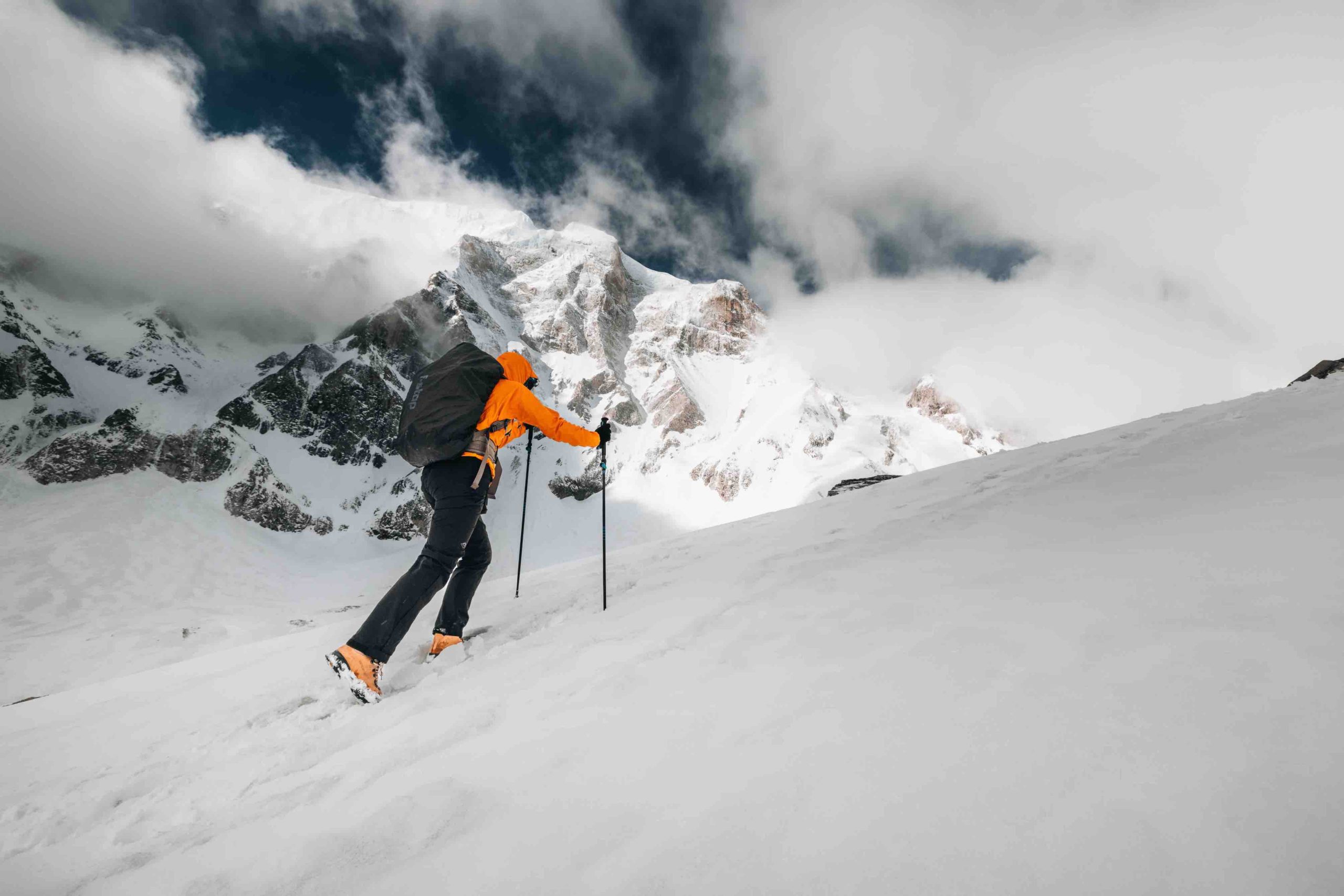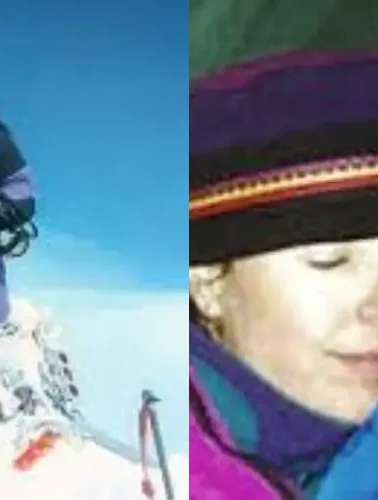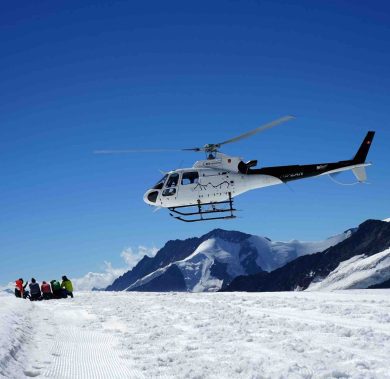
Packing Gear List For Khopra Danda Trek

It is common to get baffled about what to include and what is not in the gear list for any trip we plan. This article
will explain each and every item that is required for the Khopra Danda trek. However, requirements might vary from person to person. One of the important things you must be alert of is the clothing which is described briefly in our What to Wear in the Khopra Danda Trek section.
Before you make a list of equipment, consider how long you probably spend on the trail and what season you are planning to do the trek. The equipment required for spring or autumn might not be enough for winter. Personal needs and interests are also the factors to be noticed. Read the list and the description below and decide what is needed for you and whatnot. Remember!
We do not mean to say that all the items below are required for all visitors. As we have already mentioned above, the requirements differ from person to person and season to season. Although it is our optimum attempt to include as many possible items as we can, there might be still some more items needed for you.
Gear List For Trek
Rucksack (30-35 lit. capacity):
It is a large bag you require for keeping almost all the items you are taking on the trip. Find a perfect waterproof cover for the rucksack so that you won’t be troubled even if it rains on the way.
Daypack:
The daypack is great for carrying a day’s worth of gear. Find the comfortable one with a waistband that transforms some of the weight to the hips. Choose the standard size having enough space to adjust the camera, water, jacket, and other odds and ends.
Sleeping Bag:
The teahouses provide you with a cozy bed with a warm blanket. If you need it, you can also ask for the extra one. However, we suggest you take a sleeping bag so that you can have sound sleep even if there is not a proper bed in the teahouse.
Water Bottle:
Carry at least two reusable water bottles. Bottled water at a higher altitude is significantly expensive. By carrying reusable water bottles you are contributing to lessening the pollution level in the Himalayas.
Camera:
While trekking in Nepal’s Himalayas, you will enjoy many stunning snowcapped mountains and panoramic landscapes. I am pretty sure you will not be satisfied fully until you capture those breath-catching views with your camera. So, carry a branded camera that adds to your happiness with clear pictures.
Memory Card:
Make sure you have enough space to store the pictures and videos you shoot during the trek.
Battery Charger:
Your camera does not work if it does not have enough charge. Remember to carry the right charger so that you will not be troubled with your devices.
Trekking Poles:
The trails in the higher altitude might be covered by the snowmaking it slippery. Even the lower elevation trails get slippery if you are trekking in monsoon season. The trekking poles are great equipment for you at that time.
Torch/Bulbs/Spare Batteries:
Once you leave home you are not sure what happens when. Sometimes you might have to walk till late evening and in the early morning. In such conditions, the light you are carrying is only the source of light that helps you see the trail.
Some of the teahouses at the higher altitude might not have electricity in the rooms. The headlamp is an amazing alternative for both the trails and the rooms. Similarly do not forget to carry extra bulbs and batteries as they might stop functioning anytime anywhere.
Altimeter:
You are always eager to know what altitude you are standing at. If you carry an altimeter, it will always tell you what height you are at from sea level.
GPS:
It is important for you as it helps to know the accurate geographical location you are on the Earth. Binoculars: Binoculars are amazing and essential (as for me) devices for the Himalayan trek. They help you see distant objects very clearly. More importantly, it helps you to see the trails and possible disasters like avalanches, floods in the river, or any wild beast approaching you from the distance.
Plastic Bags: Some of the innerwear like underwear, socks, etc. has to be changed every day. You probably do not put them into the trash box after a single use. Do not mix the used items with the fresh ones as they might damage others. Separate the dirty clothes from the clean ones by putting them in plastic bags.
Quick Drying Towel: You will have quite a tight schedule every day during your trip. Make sure you are carrying a quick-drying towel otherwise, the wet towel may ruin all other stuff and produce a bad smell. Laundry Soap Powder: Not everywhere and anytime you can have your dirty stuff washed but at some teahouses, you can wash the small items like socks, underwear, etc., and hang them somewhere in the room the whole night to dry.
Toilet Paper: The teahouses along the trekking trail offer you the basic toilet probably the squat ones. Very few of them have western flush toilets. Perhaps none of them provides you with toilet paper. So, carry enough. You can buy them along the trail.
Sunscreen: Carry the right sunscreen for your skin to protect yourself from the sunlight. Lip balm: The dry air at a higher altitude makes your lips dry and sometimes causes cracks on the lips. Frequent use of lip balm moisturizes the lips.
Pocket Knife: You are not permitted to carry any weapon without a valid license. A pocket knife, however, can be carried which is useful for pilling the fruits on the way. It can also be used for other purposes as well.
Water Purification Tablets: Buying bottled water whenever you require is expensive and not practical, especially in remote regions. You can refill the bottle from the natural springs or the tap and purify with the tablets before you drink.
Insects Repellant: If you are trekking in the rainy season, there is a high possibility of leeches and bugs along the trail. Putting a pinch of salt is a great idea to remove leeches from your skin. Better bring some insect repellant that will be useful for many other moths and insects.
Emergency Kit: We wish to have an amazing time but sometimes we happen to face difficulties. We must be prepared for all kinds of emergency situations. Make sure the kit includes a whistle, lighter and waterproof matches.
Earplugs (optional): Some of us have the unique habit of listening to music before going to bed. Do you have the same habit? Carry earplugs!
Trekking Map/Copies of Passport: If you travel with a guide, you probably do not need the map but we advise you to carry them. You might need some copies of your passport along with the trial. So, make some copies and keep them with you.
Diary/Pen/Copy (Optional): It is good to keep some notes wherever you go. Keep a record of your memories and experience in the form of a poem, story, and travelogue, or in any form you like. Who knows, the piece might be world-famous someday!
Pee Bottle/Funnel:
Most teahouses have sharing bathrooms and toilets that are difficult to go especially at night. It is a good idea to have one pee bottle with you. Remember to have a different colored bottle. Not the same as the water bottle. For women and girls funnel is required.
Face Mask: Some sections of the trail are full of dust. Using a face mask is great to keep yourself safe from the dust. Today the face mask has become an essential item worldwide due to the outbreak of the Covid-19 pandemic.
Diamox:
The final destination of the Khopra Danda trek is Khopra Ridge at 3640-meter altitude and the Layer Lake at an altitude of 4660 meters. You might suffer from altitude sickness. Diamox can be a great option for you if you suffer from altitude sickness.
Anti-Diarrhea Pills:
Many of us suffer from diarrhea while making a trip to a new place. You better carry some pills so that you can take them and feel comfortable in case you get diarrhea.
Cough Drug (Koflet): The dry air in higher altitudes and dusty trails in lower elevations might cause irritation in your throat and a raspy voice. Taking some Koflet is good to soothe your throat.

